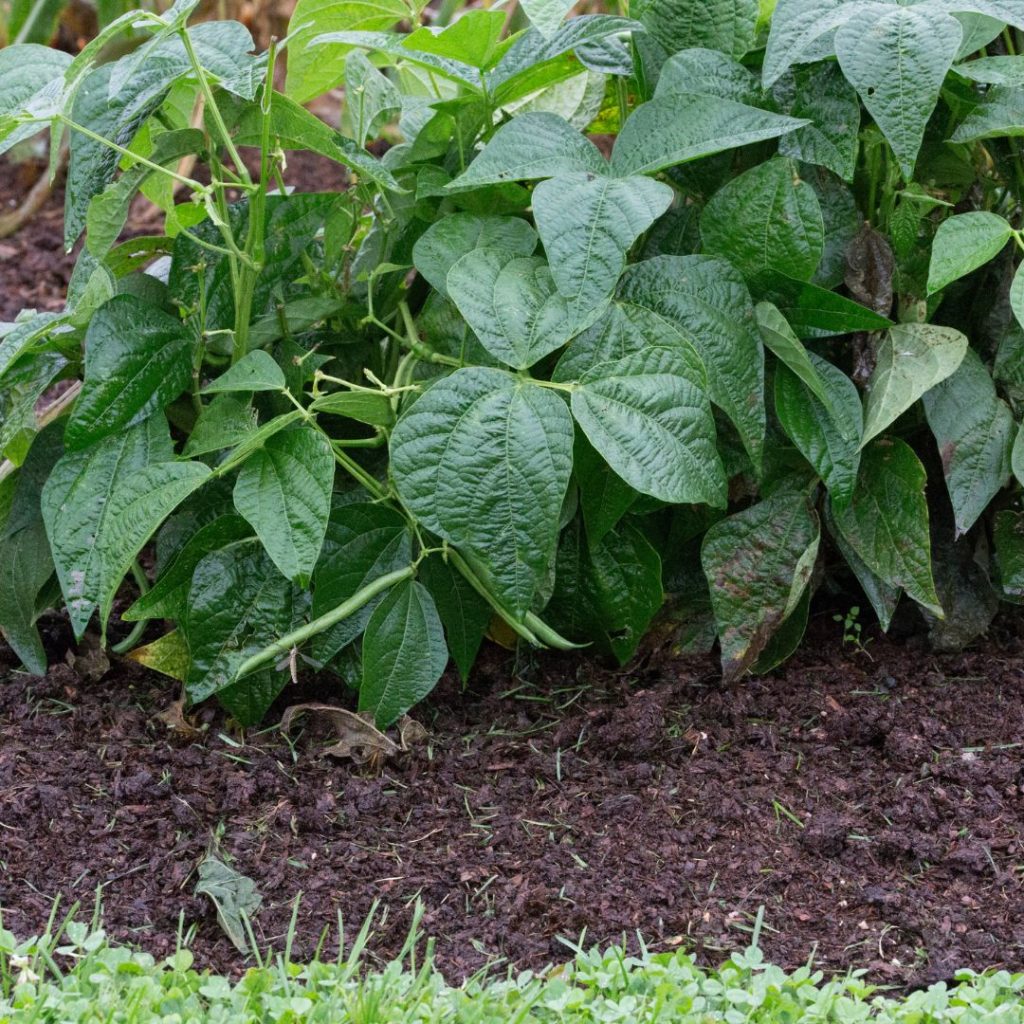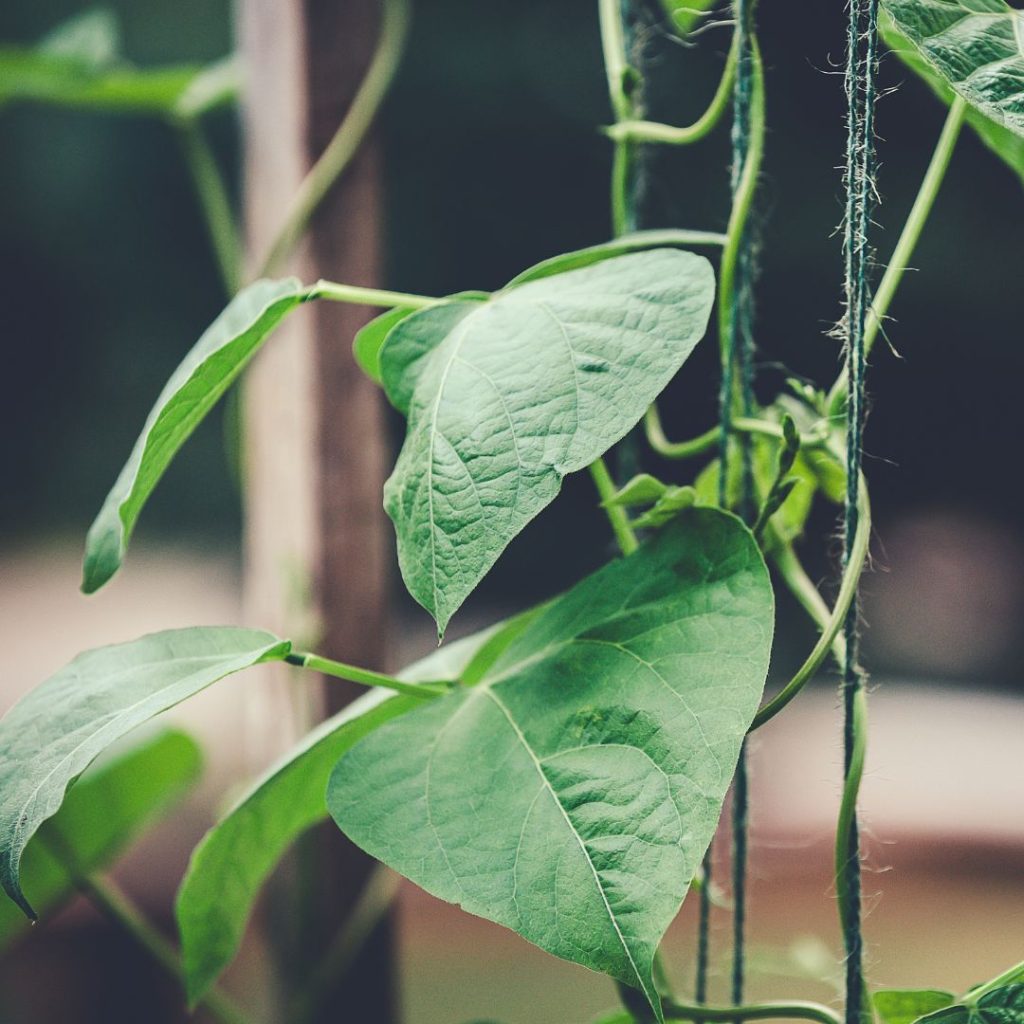If you’re after something easy to grow that’ll give you a steady harvest all summer, green beans are a great place to start. Whether you prefer the compact bush types or the vining pole beans, green beans are a great addition to your summer garden.
Bush vs. Pole Beans: What’s the Difference?
-
Bush beans are compact, low-growing plants that don’t need support. They mature faster—usually within 50–60 days—and produce most of their harvest over a two-week window. I like to plant bush beans in my raised beds in front of my tomatoes and peppers.

-
Pole beans are climbing vines that need a trellis or some type of support. They take a little longer to mature (60–70 days), but produce beans over a much longer period, often until frost.

Start from Seeds—Not Transplants
Green beans grow best when direct seeded into warm soil. They don’t like being transplanted and often fail to thrive when moved. Wait until the danger of frost has passed and your soil has warmed to at least 60°F. In most areas, that’s a few weeks after your last frost date.
How to Plant Green Beans
-
Choose a sunny spot—green beans need at least 6–8 hours of sun a day.
-
Soil prep: Beans aren’t heavy feeders, so amend your soil with compost before planting but skip the high-nitrogen fertilizer.
- Square Foot Gardening Spacing:
- Bush beans: Plant 9 per square foot (3 rows of 3).
- Pole beans: Sow seeds 1 inch deep, 4–6 inches apart at the base of a trellis, teepee, or arch.
-
Watering: Keep the soil consistently moist (but not soggy) until the seeds germinate—usually within 7–10 days.
Succession Planting for a Longer Harvest
One of the best ways to enjoy green beans all summer is through succession planting.
-
For bush beans, sow a new round of seeds every 2–3 weeks until about 8 weeks before your first fall frost.
-
For pole beans, you usually only need to plant once—they’ll keep producing as long as you keep harvesting.
Trellising Pole Beans
Pole beans need vertical support. Here are a few easy options:
-
Teepees made of bamboo poles or branches.
-
A-frames or string trellises stretched between stakes.
-
PVC arches or cattle panel tunnels (bonus: they double as shade tunnels for other crops).
Make sure the trellis is in place before planting to avoid disturbing young roots later.
Watch Out for Pests
Green beans are fairly low-maintenance, but keep an eye out for these common pests:
-
Mexican bean beetles: Look like yellow ladybugs; their larvae feed on leaves. Handpick and use row covers if needed. Plant marigolds in with your beans.
-
Aphids: Tiny sap-suckers that cluster on new growth. Spray with a strong stream of water or attract beneficial insects like lady bugs who can eat 5000 aphids over the season. The best way to do this is to interplant flowers and herbs in your vegetable garden.
-
Cutworms: These can snip off young seedlings at soil level. Protect stems with cardboard collars.
Avoid overhead watering, instead watering at the base of the plant instead. Rotate crops each year to help prevent disease and insect problems.
Harvest Time!
-
Harvest when the pods are slender, smooth, and about the size of a pencil—typically 4 to 6 inches long, depending on the variety. You want to pick them before the seeds inside start bulging, which means they’re getting tough and stringy. The more you harvest, the more the plant will produce—so check often!
Storing Your Harvest
After picking, rinse the beans and let them dry completely. Store them in a loosely closed plastic bag or reusable produce bag in the crisper drawer of your fridge. They’ll stay fresh for about 5 to 7 days. For longer storage, you can blanch and freeze them—just 2 to 3 minutes in boiling water, cool in an ice bath, then freeze in airtight containers or bags.
If you have been putting off growing your summer garden because you just don’t know where to start, you’re feeling like you could use a little extra help putting it all together…
My No Fuss Online Garden Course is ready when you are!
This step-by-step course walks you through exactly how to:
-
Start your garden from scratch
-
Choose the right vegetables for your space
-
Plant, maintain, and harvest your summer crops—like tomatoes, squash, and peppers
-
Avoid overwhelm with a plan that works in real life
Bonus: When you enroll now, you’ll get access to the replay of my Raised Bed Gardening Class and the Organic Pest Control Workshop—free!
Get your summer garden off the ground—with confidence.
Click here to join the No Fuss Garden Course
Happy planting,
Karen


I’m eager to learn new gardening ideas.
Hi Denise
I will be sharing tips weekly on how to grow a great summer garden